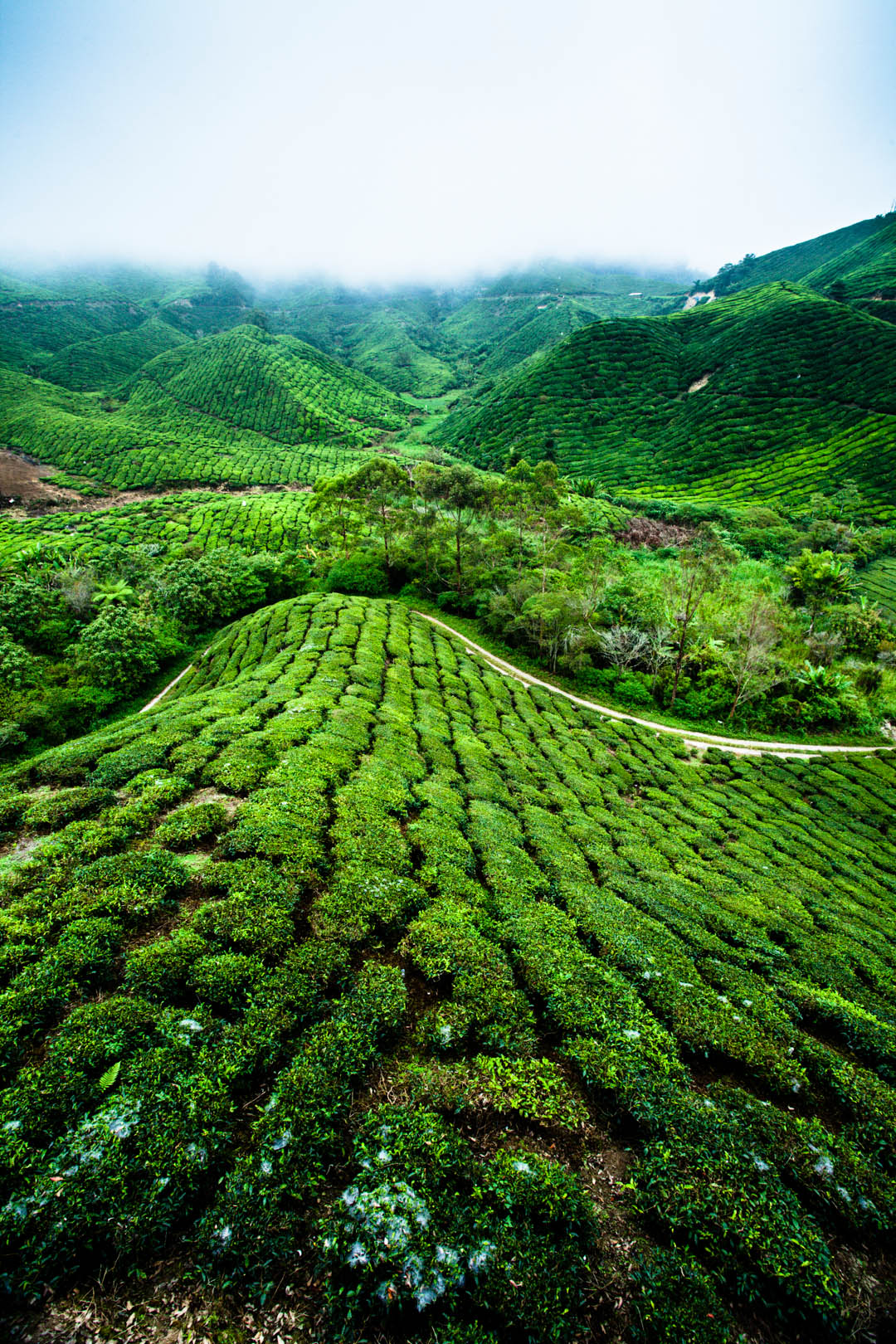BOH Tea plantation
We are pretty sure that you have already heard about the crazy way of driving in SE Asia. Well, after a few fantastic days in Penang we chose our next destination: Cameron Highlands. We bought tickets in a minvan and hit the road, literally. And yes, our driver was a nutter. He picked us up almost one hour late from our hotel and it seemed like he really wanted to catch up with time. He didn’t speak a single word of English and drove us to the destination like Vin Diesel drives in “Fast and Furious” but instead of Ferrari we had a shitty mini-van and the road wasn’t anything similar to a Formula 1 circuit. Curves, bumps and more curves, road works at every corner, massive trucks to almost impossible to overtake… He didn’t stop beeping at everything he saw on his way and brake at the same time. The result of his shockin driving was a massive headache and a stomach ache just like you get riding a roller coaster. Four hours later our feet touched the ground, a such simple thing made us so happy.
Cameron Highlands is a place of mountains and hills in central Malaysia. The climate changes drastically, it is quite cold comparing to average temperatures close to shore. The wet and “cold” climate turns everything green creating a perfect place to grow tea.
Two main companies use these lands to plant and harvest their tea here: Boh and Bharat. 95% of their production is exported to foreign countries making these two enterprises one of the most important sources of income for locals. The other one is tourism drawn to tea plantations and their impressively beautiful and unique landscapes so many people feel tempted to visit. When you look at them it seems like you are in a museum admiring a painting. It is that perfect that it looks unreal. We had the opportunity to visit Boh factory and partly learn the process of tea production (We say partially because, unfortunately, they were carrying refurbishment works on site) and at the end of the visit enjoy a delicious cup of tea in a cafe with views over the plantations. Stunning, both prices and vista.
Another great thing to do in Cameron Highlands is mountain and mossy forest trekking. The latter was so damp and muddy that we ended up completely wet and dirty but had so much fun, we felt like kids again, it was definitely worth it. You can also find here the biggest flower in the world, Refflesia Arnoldii grows in the local forest but,unfortunately, it wasn’t the season for it and we didn’t see it.
And here is some pics from our trekking through the mountains.
Sadly, we cannot prize everything up there. On the other side of the fence there is a massive devastation of lands and the pollution that comes along with it. Both, Strawberry and Tea plantations and the uncaring methods the locals practice, are destroying such a beautiful landscape. We were very upset when we saw the damage the humans have made to Earth. On top of that, there is massive collection of garbage everywhere, especially in rivers and along the roads and the worst thing about is the fact that no one cares about it. We had many chats with various people over a bottle of Chang were we share our worries about it. All had the same feelings about it. It definitely had a massive impact on all of us. Personally, the bigger impact made on us the fact that there is nothing that can be done to stop it. Government knows about it but, apart little fines issued to local business, does nothing to change it. Sorry, they are "trying" to cease the spinning wheel but the incomes are stronger then the concerns about environment pollution and in the end nothings is getting done... No comment...














































